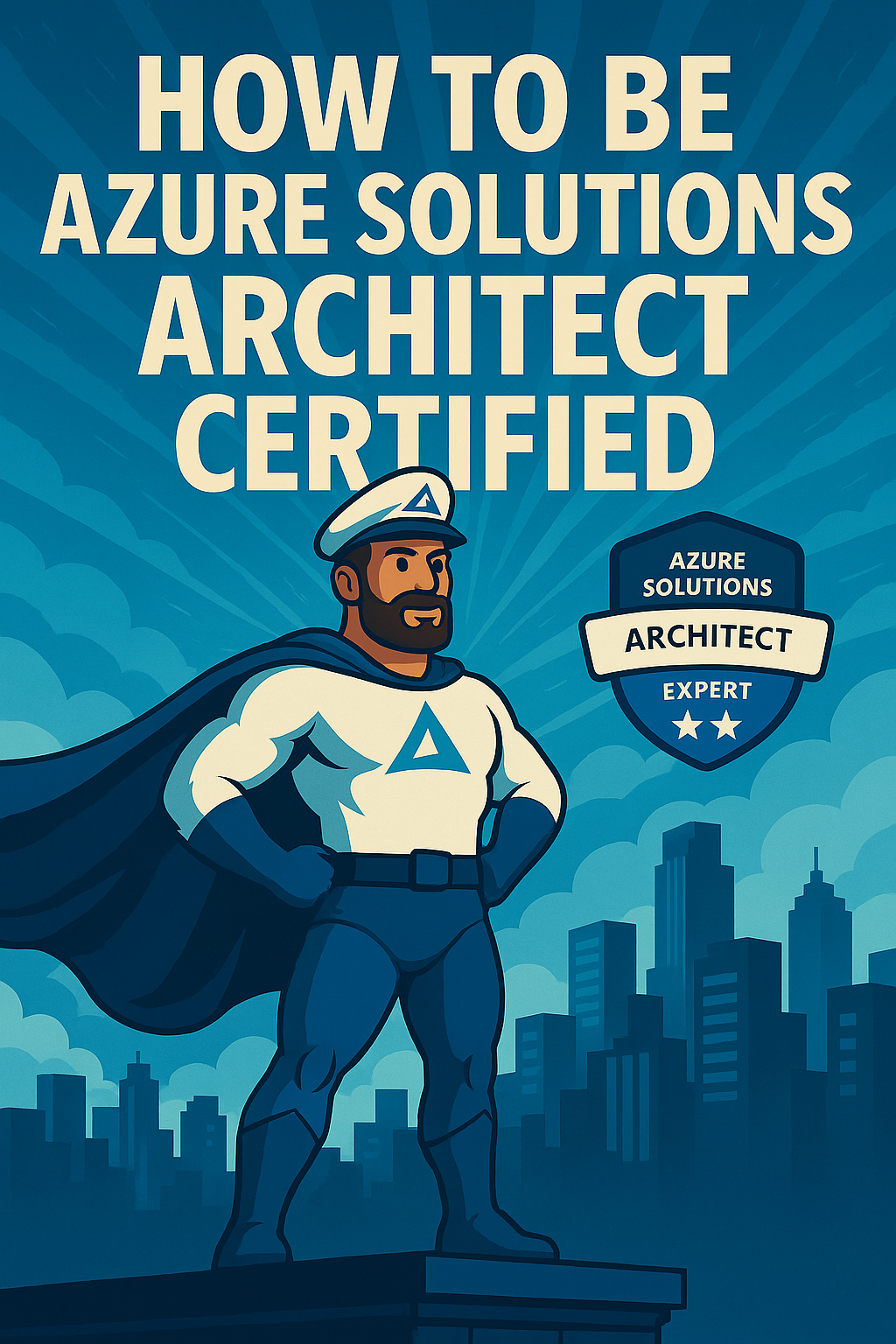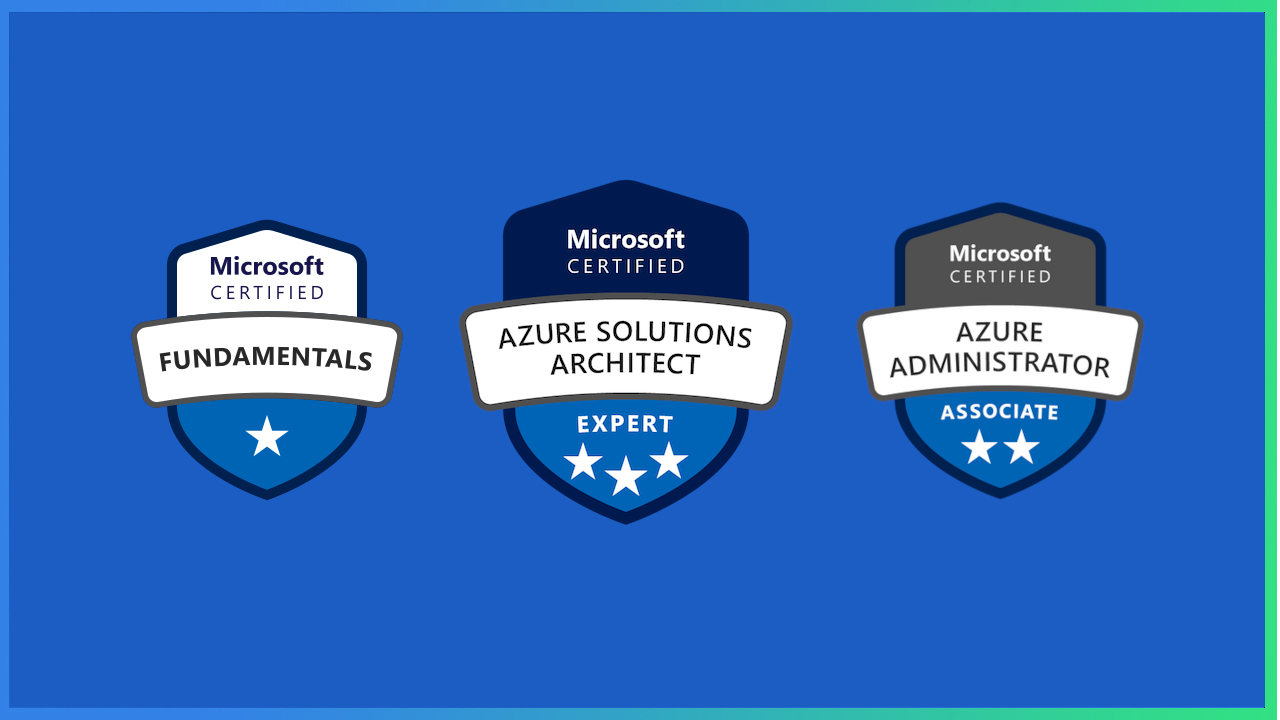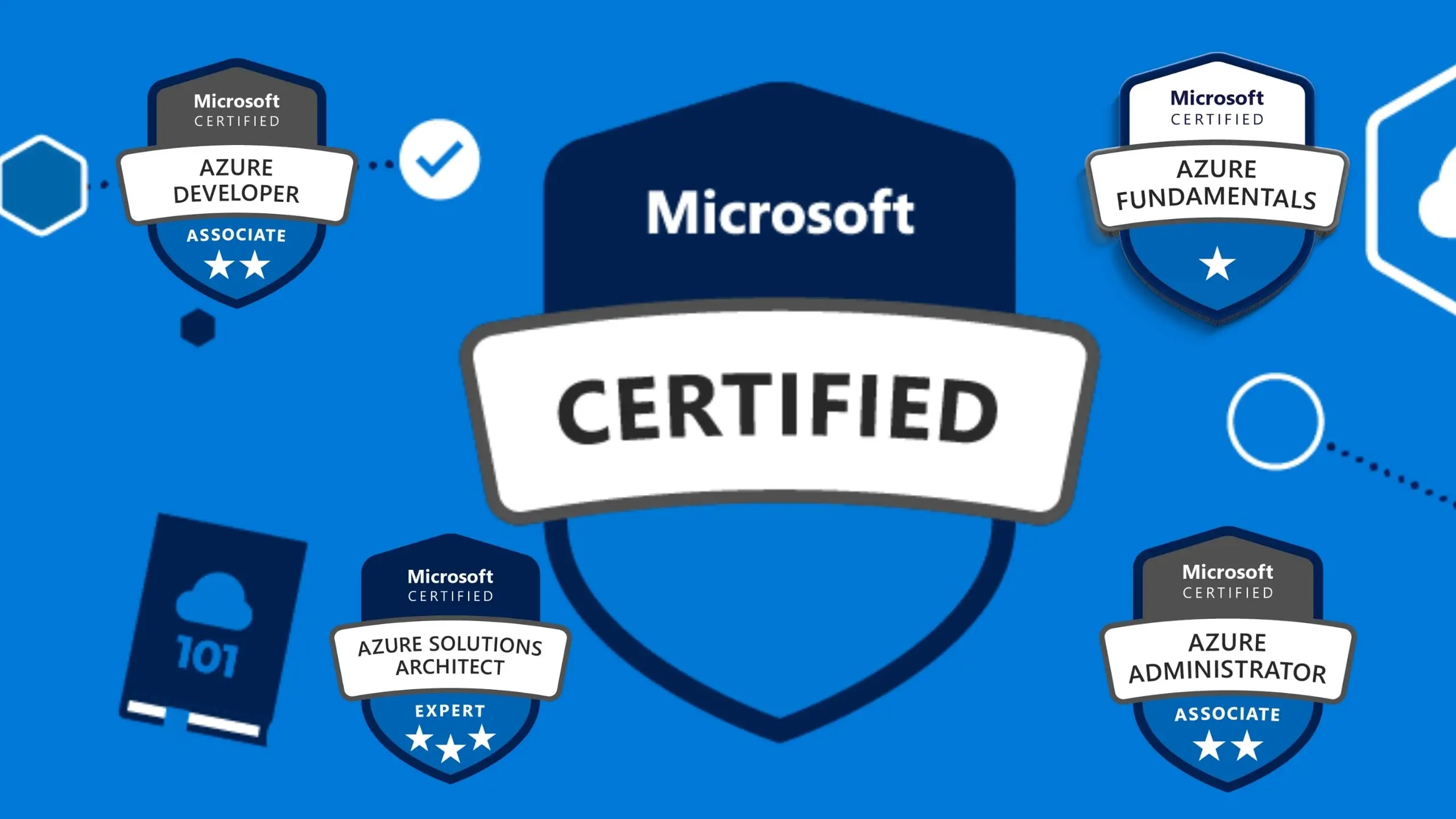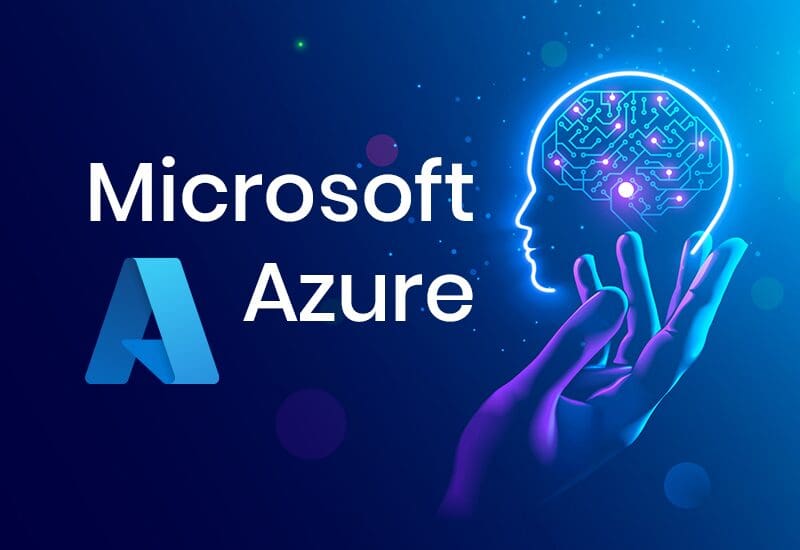How to be Azure Solutions Architect Certified & Pass the Exam

I have always dreamed of earning the AZ-305: Designing Microsoft Azure Infrastructure Solutions certification.
In the seven years that I have been working in the cloud and security field, this goal was always at the back of my mind. For me, this certification is more than just a badge. It represents a milestone that proves I can design, build, and guide complete solutions on Azure that balance security, cost, performance, and operations.
This certification is not only about passing an exam. It is about proving that you can think like an architect, make the right design decisions, and turn requirements into secure and scalable solutions.
When I started my journey, I often searched for a clear guide on how to prepare for the exam and what skills to focus on. I could not find a simple step by step roadmap that felt personal and practical. That is why I decided to write the guide I always wished I had. If you are just starting or if you already have years of experience, I hope this will help you approach the AZ-305 with confidence.

Table of Contents
- Understand the Certification Path
- Prerequisites & Role Expectations
- What You Must Know (Skill Map)
- Study Resources That Work
- Hands-On Labs (Do This, Not Just Read)
- 8-Week Study Plan (Per Exam)
- Practice Tests & Question Types
- Exam-Day Strategy
- After You Pass: What’s Next
- FAQ
1 · Understand the Certification Path
To become a Microsoft Certified: Azure Solutions Architect Expert, you need to pass two exams that build on each other and prove both your technical depth and your design skills:
- AZ-104: Microsoft Azure Administrator This exam validates that you can implement, manage, and monitor core Azure services such as compute, storage, networking, and identity. It is hands-on, practical, and focused on daily operations.
- AZ-305: Designing Microsoft Azure Infrastructure Solutions This exam measures your ability to translate business requirements into secure, resilient, and cost-optimized architectures. It is scenario-based and tests how you think like an architect.
Most learners take AZ-104 first because it provides the foundation of Azure operations. With that knowledge, AZ-305 becomes easier since you are already confident with the building blocks of the cloud. If you already have several years of hands-on Azure admin experience, you can study them in parallel - but it is strongly recommended to schedule AZ-104 before attempting AZ-305.

2 · Prerequisites & Role Expectations
You don’t need decades of experience to become an Azure Solutions Architect, but you do need a solid foundation of skills and mindset. The certification expects that you can combine technical expertise with business thinking, making design decisions that balance performance, cost, and security.
Before you begin preparing, make sure you are comfortable with:
- Deploying and operating core Azure services – this includes virtual machines, storage accounts, networking fundamentals, identity and access management, and monitoring with Azure Monitor or Log Analytics.
- Reading and translating requirements – you should be able to take business and technical inputs and turn them into architecture decisions and constraints.
- Making trade-offs using the Azure Well-Architected Framework – every design balances reliability, security, cost, performance, and operations. The exam will test how you prioritize and justify these trade-offs.
It is also very helpful to have: basic scripting with PowerShell or Bash, familiarity with Infrastructure as Code tools like Bicep or Terraform, and exposure to hybrid networking (VPN or ExpressRoute), containers (AKS or Azure Container Apps), data and analytics services (Azure SQL, Cosmos DB, Synapse), and disaster recovery or backup strategies.

3 · What You Must Know (Skill Map)
Identity & Security
- Microsoft Entra ID (tenants, B2B, PIM, conditional access)
- RBAC vs. ABAC, managed identities, Key Vault
- Network security: NSG/ASG, Azure Firewall, WAF, Private Link
Networking & Connectivity
- VNets, subnets, routing, DNS (private/public), VNet peering
- Load balancers, Application Gateway, Front Door, Traffic Manager
- Hybrid: VPN, ExpressRoute, Virtual WAN
Compute & Containers
- VMs, scale sets, images, proximity placement groups
- App Service, Azure Functions (consumption vs. premium)
- AKS & Azure Container Apps, ingress, scaling (HPA/KEDA)
Data & Integration
- Azure SQL (PaaS/MI), Cosmos DB, storage redundancy (LRS/ZRS/GZRS)
- Synapse, Event Hubs, Service Bus, Data Factory
- Backup & DR: ASR, Backup Vaults, RTO/RPO design
Platform & Operations
- Governance: management groups, Blueprints/Policy, tagging
- Observability: Azure Monitor, Log Analytics, alerts, budgets
- Cost optimization (FinOps mindset, reservations, savings plans)
4 · Study Resources That Work
- AZ-104 Exam Page and the official Microsoft Learn path.
- AZ-305 Exam Page and the official Microsoft Learn path.
- Azure Documentation — always check the “Overview”, “Best practices”, and “Limits” sections for each service.
- Hands-on Labs: build in your own Azure Free Account or use the Microsoft Learn sandbox.
- John Savill Youtube Channel — use his videos to identify knowledge gaps, not just memorize.
5 · Hands-On Labs (Do This, Not Just Read)
Recreate scenarios that appear again and again in the exam — and in real-world projects:
- Networking & DNS: Build a hub-and-spoke topology with Private DNS zones, Private Endpoints, and Application Gateway (WAF). Verify name resolution from on-prem via a custom DNS VM.
- Identity & Access: Configure PIM for least privilege, create managed identities, and restrict a Key Vault with Private Link.
- Storage & DR: Provision StorageV2 with immutability (time-based retention), lifecycle rules, and test GZRS failover. Compare with Premium File shares.
- Data & Messaging: Create Event Hubs with Capture to ADLS Gen2, consume via Databricks or Synapse, and validate data formats like Avro or Parquet.
- Compute: Deploy AKS or Azure Container Apps with HTTPS ingress, WAF, and autoscaling (HPA/KEDA). Add Azure Front Door for global entry.
- Ops & Cost: Set budgets and alerts, enable Change Analysis, and export diagnostics to Log Analytics.

6 · 8-Week Study Plan (Per Exam)
Repeat this cadence for each exam—AZ-104 first, then AZ-305.
- Weeks 1–2: Learn modules + quick labs for Identity, Governance, Cost, Monitor.
- Weeks 3–4: Networking deep dive: routing, DNS, private access, load balancing.
- Weeks 5–6: Compute & Data: App Service/Functions/AKS, SQL/Cosmos/Storage redundancy & backup.
- Week 7: End-to-end labs (from the list above). Write down design justifications.
- Week 8: Two full practice tests, review weak areas, book the exam, light revision.

7 · Practice Tests & Question Types
The exams mix multiple-choice, case studies, drag-and-drop, and sequence/review items. Tips:
- Design lens: AZ-305 asks “what should you recommend?”—choose the simplest design that satisfies all hard constraints (e.g., private network path only, RPO/RTO, cost minimization).
- Eliminate wrong answers fast: If the requirement says “must not traverse the public internet,” remove answers without Private Link/ExpressRoute/PE.
- Know defaults & limits: redundancy types (LRS/ZRS/GZRS), AKS/ACA scaling, App Gateway vs. Front Door roles, SQL backup/HA options, DNS resolution order.

8 · Exam-Day Strategy
- Skim the case study requirements first; star the non-negotiables (security, DR targets, private networking).
- Answer everything on first pass; flag time-sinks and return later.
- Prefer platform features over bespoke ops (e.g., Azure Backup or ASR over manual scripts, Policy over human review).
- Think in patterns: hub-spoke, Private Link + Private DNS, WAF at ingress, AFD for global accel, App Gateway for regional L7, APIM for API exposure & rate limits.

9 · After You Pass: What’s Next
- Apply the Well-Architected Framework reviews on your real workloads quarterly.
- Level up with adjacent certs: AZ-500 (Security), SC-100 (Cybersecurity Architect), DP-203 (Data Engineering), or AI-102 (AI Engineer).

10 · FAQ
How long should I prepare? Typical candidates spend ~6–8 weeks per exam with 6–8 focused hours weekly.
Do I need daily Azure access? Yes—hands-on is decisive. Even a small subscription is enough.
What background is most helpful? Admin/DevOps/Networking experience, plus comfort with security and data basics.
Can I skip AZ-104 if I have experience? It’s recommended to take AZ-104 first, but experienced pros can study both in parallel.
What if I fail? Analyze weak areas, revisit labs, and retake. Most pass on the second try.
How do I stay current? Follow Azure updates, revisit the Well-Architected Framework, and apply learnings in real projects.
Conclusion
Becoming an Azure Solutions Architect is less about memorizing screens and more about mastering patterns and trade-offs. If you keep requirements front-and-center—security, resilience, cost, performance, and operations—you’ll design solutions that pass the exam and thrive in production. Use this guide as your roadmap, iterate weekly, and share what you learn with your team and the community.
Good luck on your journey to becoming a Microsoft Certified: Azure Solutions Architect Expert!
